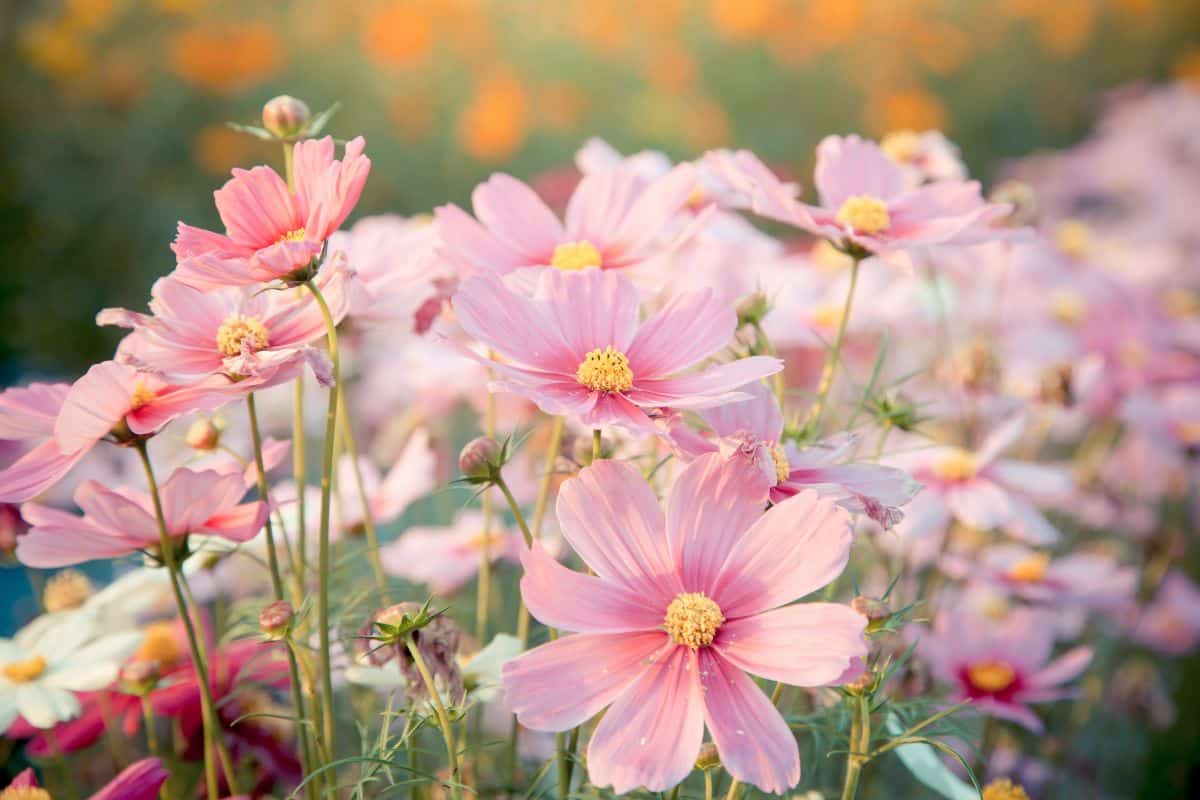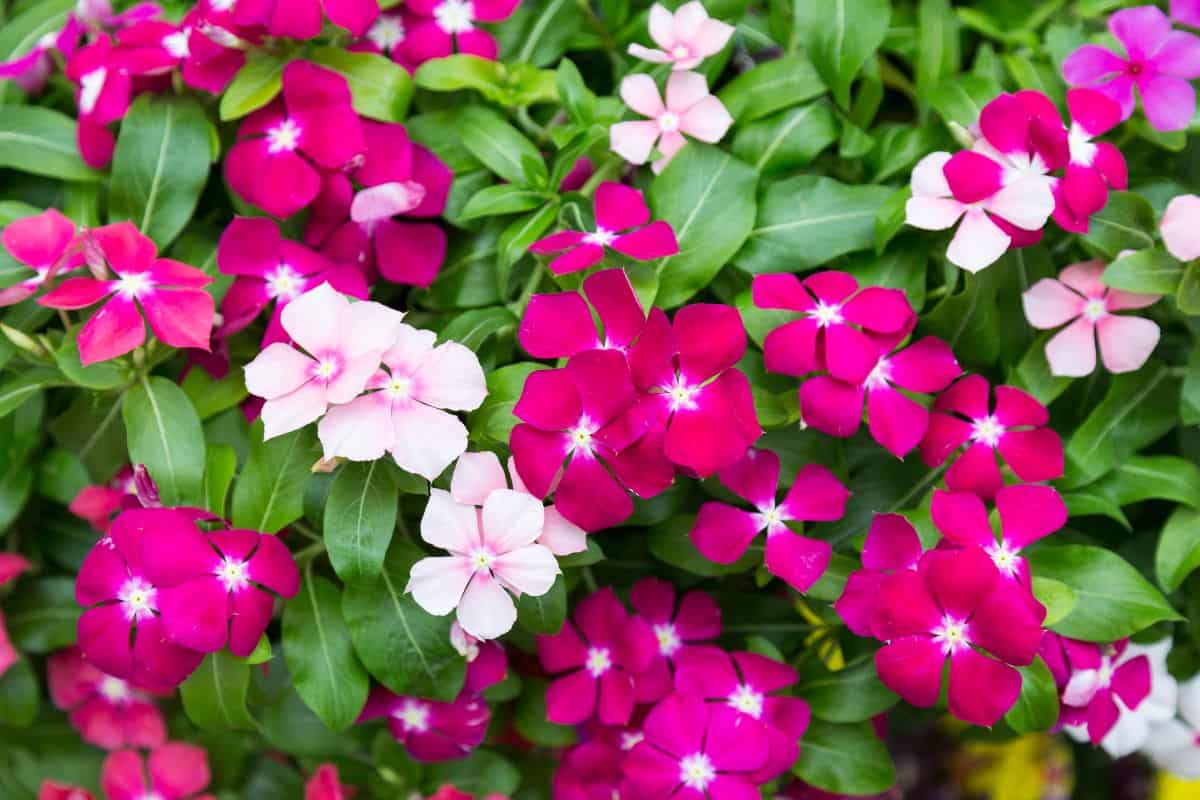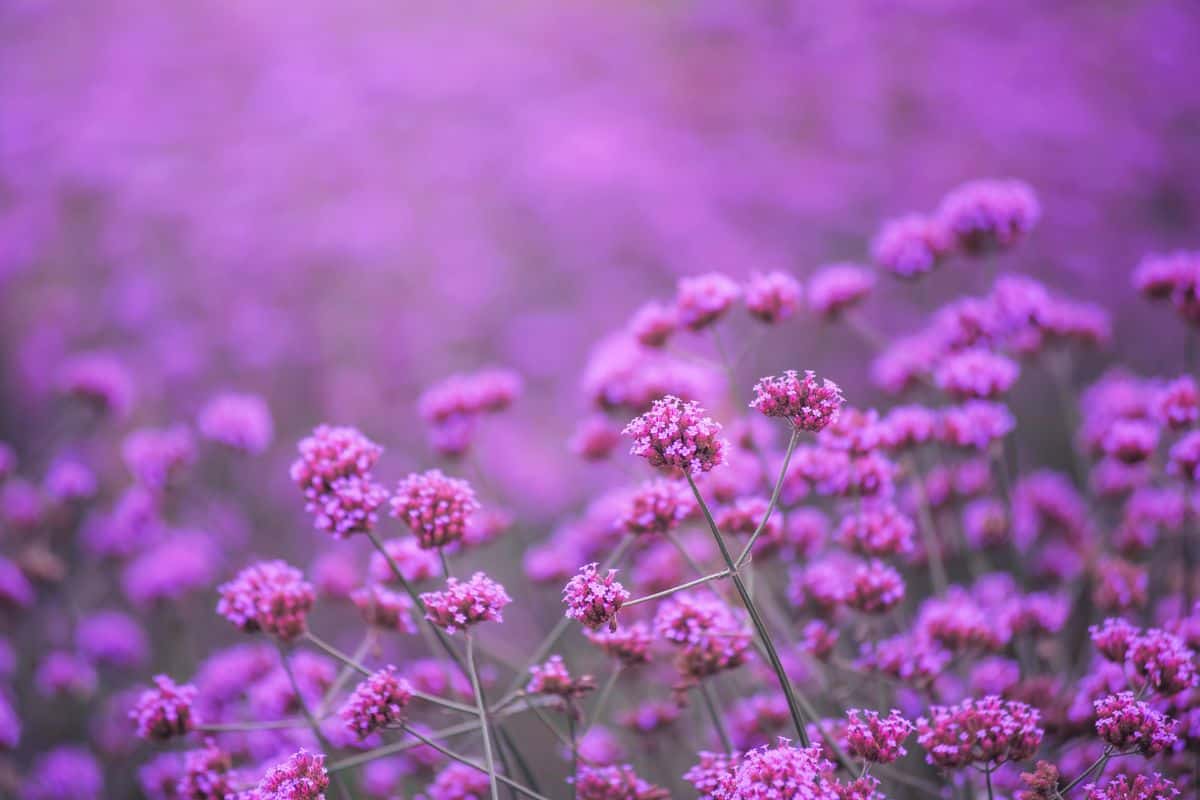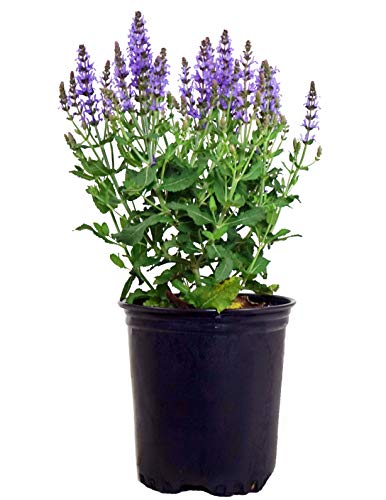Annuals are the showmen of the flower garden, providing cascades of vibrant color all season long. The heat of the afternoon sun in mid-summer can be unforgiving for some types of plants, though. Thankfully, we have searched out the best annuals that can not just take the heat, but will thrive in it.
![19 Annuals for Afternoon Sun [Tips and PICTURES Included]](https://gardentabs.com/wp-content/uploads/2019/07/19-Annuals-for-Afternoon-Sun-Tips-and-PICTURES-Included.gif)
1. Marigold
These are vibrantly colored hardy plants. The flower heads range from 2 to 5 inches across and golden yellow and deep orange are their most common colors. They can grow up to 36 inches in height, but dwarf varieties can be much smaller and compact.
The marigold is effective in its medical treatment of inflammatory skin issues, whether it's from infection or physical damage. The pigment from the flower heads can also be used as a food coloring.
Some varieties may need extra support to keep them standing upright in strong winds and rain.
Click here to see more on Amazon.
2. Portulaca
Also known as "sun rose" or "moss rose", this is a low growing, easy-to-grow ground cover plant. It has cylindrical deep green foliage that retains water well, giving it a more full appearance. The blooms showcase brilliant colors of red, pink, orange, yellow, white, cream, and dark lavender.
Because the portulaca is drought tolerant, it doesn't need to be watered very frequently. It is also known to attract butterflies.
Since this plant can spread so easily, it can be invasive to other areas of garden growth.
Click here to see more on Amazon.
3. Petunia
This plant is one of the most common and easily recognizable. There are two primary different groups: one has large flowers and grows best in hanging containers or upright pots while the other group has smaller but more abundant flowers that grow best in garden beds and borders.
The petunia plant has one of the most diverse color and pattern options. Patterns include speckled, veined, striped, or solid. Color selections include red, pink, orange, yellow, blue, purple, black, white, or multicolored.
Petunias need regular watering to ensure that their shallow root system won't dry out. However, make sure they don't get overwatered which could lead to root rot and yellowing leaves.
Click here to see more on Amazon.
Click here to see more on Amazon.
4. Chamomile
This is an aromatic, edible, herbaceous plant with daisy-like flowers. The white blooms last between May and October and give off scents reminiscent of apples or pineapples. The plant can grow from 2 to 3 feet in height, depending on conditions. The different varieties of Chamomile can have soft green fern-like feathery leaves or thick and flat-faced like parsley.
Chamomile has soothing properties, which leads to its variety of uses in products such as oils, medicines, and tea beverages. It can help to promote relaxation and support digestive health.
Click here to see more on Amazon.
5. Cosmos

The colorful flowers that grow from this plant are bowl-shaped and spread between 3 and 5 inches wide. The flowers sit atop long, spindly stems which can reach up to 6 feet in height (most common stem heights range between 2 and 5 feet). Cosmos show off their vibrant blooms for months. They come in colors of white, pink, red, burgundy, orange, and yellow. Their green leaves can be either lobed or feathery.
This plant is very easy to maintain. It can survive in poor soil conditions and is drought tolerant. It attracts butterflies, bees, and birds, which add more vibrancy and life to any garden.
Make sure to deadhead these plants in order to increase flower development and growth.
Click here to see more on Amazon.
6. Zinnia
This is a gardener's favorite due to its quick growth and heavy blooms. Some Zinnia varieties can grow up to 4 feet tall while others only reach between 6 and 12 inches of height. The vibrant, solitary heads rest on tall, rigid stems. Flower heads can be single, double, or semi-double (this refers to the number of rows of petals and if the center of the flower is visible or not). The bloom patterns come in solid, bi-color, or tri-color and the bloom colors come in shades of orange, white, cream, yellow, purple, pink, and red.
Zinnias are deer resistant which can also help protect the flowers that are planted nearby.
Click here to see more on Amazon.
7. Celosia
This is a very flashy and unique plant that adds vibrant color and texture to any garden. Celosia means "burning" in Greek, which references the way in which their blooms can resemble flames. It comes in a variety of shapes: feathery, coral, ruffled, fanned, and even brain-shaped. This plant can grow between 6 inches and 2 feet in height. The blooms come in colors of bright red, orange, pink, magenta, and yellow.
The Celosia requires well-draining soil balanced with an adequate amount of watering. It thrives exceptionally well in sunlight and warmth. It is edible and it contains vitamins and minerals that can be found in leafy greens.
Click here to see more on Amazon.
Click here to see more on Amazon.
8. Amaranth
There are between 60 and 70 different species of this plant. Some varieties are useful as food crops, some are used for ornamental purposes in the garden, and still, others are considered weeds. The stems have a red hue and have small colorful flowers on terminal spikes. They have broad green or red leaves shaped like eggs or rhombuses. This plant can grow over 6 feet in height.
The leaves and seeds of the food crop variety are great sources of iron, calcium, and fiber. On another note, since some varieties are considered weeds, they can be deemed as an invasive species to non-native areas.
Click here to see more on Amazon.
9. Vinca

This plant, also called Periwinkle, maintains constant flower blooms between the early summer and through the fall. It grows between 12 and 18 inches tall and has dark green, leathery foliage. The beautiful flowers come in colors of purple, pink, red, white, peach, magenta, and various bi-colors.
This plant is susceptible to root rot if it is overwatered. The Vinca is attractive to butterflies and is deer and rabbit resistant.
Check with local authorities to make sure that this is not an invasive species in the area where you live. If so, there could be legislation that prohibits you from planting it in your area.
Click here to see more on Amazon.
10. Calibrachoa
This plant has a trailing habit of growth and can spread 12 to 14 inches in width and 8 to 10 inches in height. Its petunia-like, trumpet-shaped flower blooms grow quickly and last through the summer and fall. The flowerheads come in solid and bi-colors of orange, pink, purple, red, yellow, and white.
The Calibrachoa attracts butterflies and hummingbirds to itself, helping the process of pollination.
It may need to be fertilized every so often in order to prevent the yellowing of its foliage.
Click here to see more on Amazon.
11. Sweet Potato
The ornamental Sweet Potato plant is grown for its showy, wide-spreading foliage. It has a trailing habit of growth, which is great for containers, hanging baskets, and adding variety to any garden. Its foliage comes in colors of lime-green, deep purple, and even copper. Its foliage can be lacy or broad. Small white and lavender, trumpet-shaped flowers may occur during the summer and fall seasons.
Click here to see more on Amazon.
12. Heliotrope
This plant's name comes from two Greek words: "helios", meaning "sun", and "tropein", meaning "to turn," due to the fact that its leaves turn toward the sun during the day. At night, its leaves turn back to the east in anticipation of the morning sunrise. It grows to a height between 12 and 36 inches.
The plant has small fragrant white, dark purple, or blue flowers that cluster together to form a flower head. The leaves are broad, vibrant, and green. The fragrance from the flowers brings to mind the scent of cherry pie.
Make sure to deadhead the Heliotrope in order to help promote future flower growth and energization of the plant.
Click here to see more on Amazon.
13. Verbena

This plant grows 12 to 13 inches in either upright height or a trailing habit. Clusters of small purple, blue, red, white, yellow, orange, or multi-colored blooms extend from slender but sturdy stems.
This plant attracts bees, butterflies, and hummingbirds to itself due to being a rich source of nectar to these pollinators. It is deer and rabbit resistant, helping to help protect the garden from unwanted visitors.
The Verbena requires regular attention in order to maintain its beautiful blooms and foliage.
Click here to see more on Amazon.
14. Geranium
This plant is colorful, aromatic, and easy to grow and maintain. There are two main varieties: zonal, meaning it grows upright, and ivy-leaf, meaning it has a trailing habit of growth. Its height depends on the variety, but the zonal types commonly grow between 2 and 4 feet in height and width while the ivy types can spread between 6 and 48 inches.
Geraniums' bright flowers bloom from springtime and through the fall. It comes in shades of white, red, pink, purple, and orange. The lemon-scented variety, Pelargonium Crispum, helps repel mosquitos.
Allow the soil to dry thoroughly between waterings; it needs well-draining soil to thrive.
Click here to see more on Amazon.
Click here to see more on Amazon.
15. Gerbera Daisy
This simple yet beautiful plant can grow between 6 and 18 inches in height. The large, colorful blooms span 2 to 5 inches in diameter and sit atop tall, single stems. The deep green foliage helps the bright-colored blooms stand out. Colors of the flowers range in shades of orange, pink, red, purple, white, and yellow. The blooms' petals can be single, double, or multiple.
Be sure the Gerbera Daisy has well-draining soil and exposure to the sun. Watering the plant in the morning will allow it to dry during the day.
Click here to see more on Amazon.
16. Anemone
This plant has over 200 species. It has simple daisy-shaped blooms, some being double flowers. Colors of their silky petals range in shades of white, red, pink, orange, yellow, blue, purple contrasting with the strikingly dark center of the bloom. It has beautiful green lobed foliage. This plant comes in a variety of growth, some reaching 6 inches while others reach up to 4 feet in height. This sun-loving plant shows off its blooms in the spring and fall.
Some varieties are aggressive with how quickly they spread, so be mindful where you plant them.
Click here to see more on Amazon.
17. Salvia
Also known as Sages, this plant has over 900 different varieties. It is an excellent addition to any garden due to its ability to grow well in hot, dry conditions, its extensive flowering season, and its strong fragrant aroma. The Salvia has small, bright flowers that grow on long rigid spikes. These blooms can be seen in colors of blue, purple, pink, red, white, and sometimes yellow. The plant averages a height of 2 to 3 feet.
This plant name originates from the Latin word, salvere, which means "to heal." It also attracts bees, butterflies, hummingbirds, which help to pollinate the garden.
Click here to see more on Amazon.
18. Spider Flower

This plant shows off beautiful softball-sized clusters of blooms that grow from a central point. It can be found in colors of white, pink, lavender, and red. The stamens that peek past the petals of the flowers give the plant a spiky look. Its dark green foliage is fern-like and delicate. It grows between 1.5 and 5 feet in height and can spread between 1 and 2 feet in width.
The Spider Flower is attractive to pollinators like hummingbirds and butterflies. It is also drought-tolerant.
Unfortunately, many times the plant does not start blooming until it has been well-established in the garden.
Click here to see more on Amazon.
19. African Daisy
This plant is also known as the "blue-eyed" daisy because of its unique coloring. Its petals can be smooth, long and flat like daisies or spoon-shaped and tubular, all spanning up to 4 inches in diameter. Its colors come in combinations of pink, white, lavender, yellow, and red. Its leaves vary by variety: lobed, toothed, thin, or ovate. African Daisies grow between 12 and 36 inches in height and can span between 12 and 24 inches in width.
Deadhead the plant in order to increase flower blooms and enhance the future growth of the plant.
Click here to see more on Amazon.
Try these full-sun annuals that bloom all summer, you might find these interesting!






















